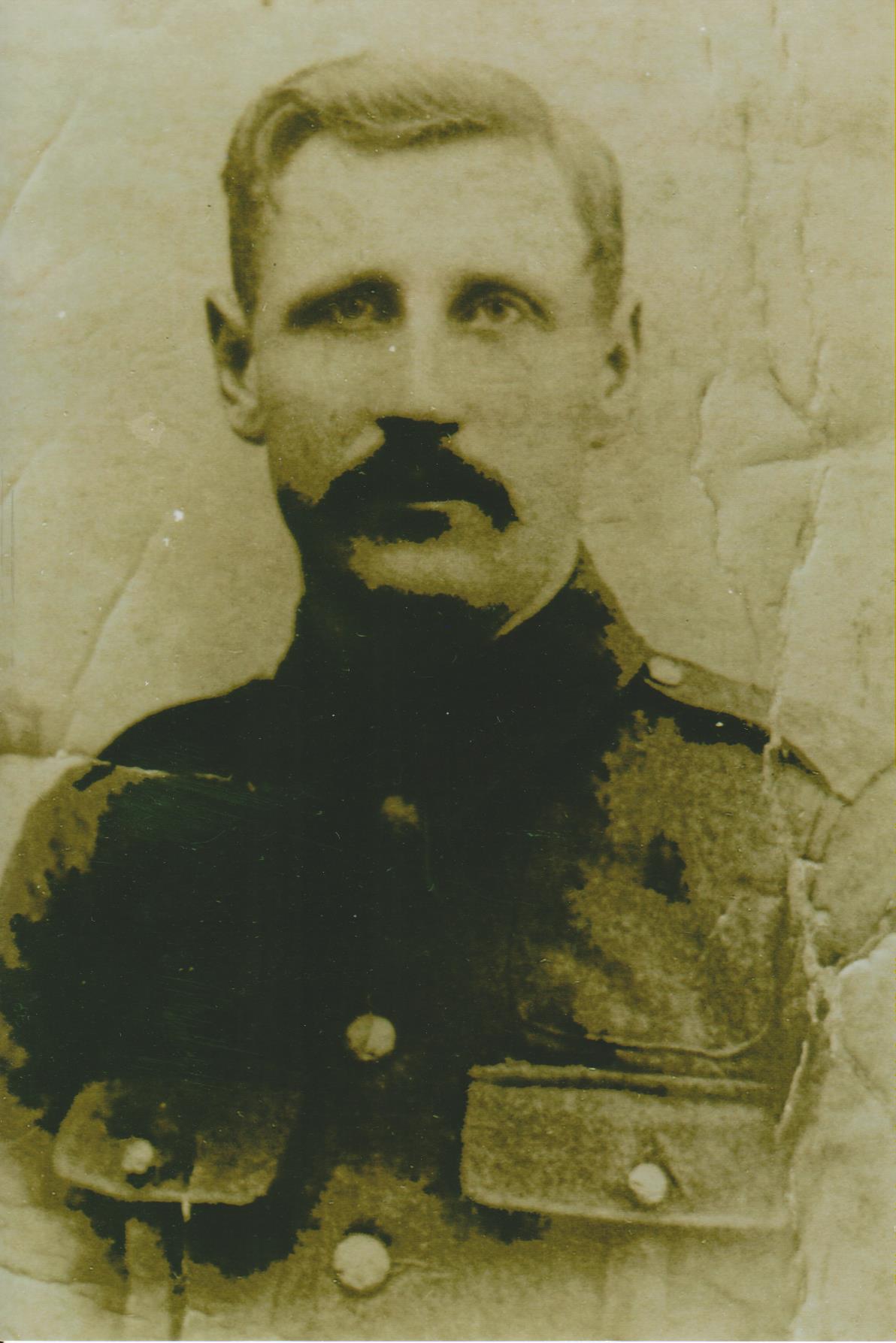
Submitted by Pauline Blewis.
George was born in Old Malton and joined the Green Howards in around 1905. In the same year he married Annie Hemstock, a Richmond girl. Their family of three sons and a daughter were raised in the barracks, now the Garden Village.
George served during the Boer War and during the First World War was transferred to the 13th Battalion (October 1915)- the battalion was made up of ‘Bantams’. George served through the war up to the Battle of Cambrai.
On 23rd November 1917 he was sent up to the front line with his battalion with the aim of taking Bourlon Wood and village. Tanks were sent in with the infantry following up, eventually the village was taken after hand to hand fighting.
George died during this advance and while his body was never found his name is inscribed on Panel 5 of the Cambrai Memorial. After his death the family were moved from the barracks into a house inside Richmond Castle.

The bed plate and identity discs belonging to George Ellis
Explore more memories from the ribbon
-
Capt Frank Walker MC
Frank Walker joined the 4th (Territorial) Battalion East Yorks in Sept 1914. He served as a private in France until being commissioned 2nd Lieutenant in July 1916 with the 11th Battalion East Yorks (2nd Hull Pals). During the 1st Battle of Ypres in April 1915 the 4th Battalion East Yorks were mentioned in a dispatch from Major General Edward Bulfin (Yorkshire Regiment Green Howards) the Commander of the 28th Division. Also mentioned for ‘good service’ in the dispatch were the 8th Battalion Durham Light Infantry and the 4th Battalion Yorkshire Regiment. Frank was promoted to temporary Lieutenant in January 1918 and acting Captain on the 14th October 1918. Frank would survive the war. In November 1917 the Battalion were based at Mont St. Eloi near Arras. It was here leading raiding party action that, in January 1918, Frank would be awarded Military Cross. The award appeared in the London Gazette on the 23th April 1918. The citation read: ‘For conspicuous gallantry and devotion to duty during a daylight raid. He led his party across a long open stretch of ground to the enemy second line. After clearing the enemy trenches and taking prisoners he successfully effected a difficult withdrawal under heavy fire.’
-
John O’Hern
John O’Hern is buried in Reeth Road cemetery, Richmond. He died of his wounds after the end of the First World War on 1 February 1919. He entered into service at the age of 29 years and 9 months while living at Mill Lane in Richmond. He worked at the paper mill and had also previously served in the 4th Territorial Battalion of the Yorkshire Regiment. His medal card shows his original regimental number (1669) and also his later number (200238) – as the 4th Battalion issued new nubmers in 1917. He was tried by Court Martial at Baizeiux on 9 October for being drunk on parade – after 6 days confinement he paid a 10 shilling fine. The card shows that not only did he receive the three well known medals nicknamed ‘Pip, Squeak and Wilfred’ – so called after a cartoon strip in the Daily Mirror, but also a Silver War badge due to his injuries towards the end of the war. Owing to a terrible gunshot wound to the spine, John O’Hern became paralysed. A bullet was removed from his spine through surgery in April 1918, but he died as a result of this battlefield injury months later.
-
Robert Baden Powell
Submitted by Neil Duncan of the 8th Darlington (Cockerton Green) Scout Group. Lieutenant-General Robert Stephenson Smyth Baden-Powell, 1st Baron Baden-Powell, OM, GCMG, GCVO, KCB, DL was born in 1857 and had a long and illustrious military career, as well as having a profound impact on civilian life for generations of young people. Baden-Powell spent most of his military service in India and Africa where he honed his Scouting skills and began writing training manuals which would later be the basis for the Scouting Movement from 1908. One of his most famous commands was during the Seige of Mafeking in 1899 when a small garrison held out for 277 days and a ‘Cadet Force’ was drawn up take over small but important jobs to allow the adults to fight. These Cadets gain an honourable mention in the opening chapter of Scouting For Boys. He returned to England to take up a post as Inspector-General of Cavalry in 1903. From 1908-10 he was in command of the Northern Territorial Army. During this appointment, Baden-Powell selected the location of Catterick Garrison to replace Richmond Castle which was then the Headquarters of the Northumbrian Division. His plan was brought to fruition following the outbreak of the First World War. The original concept was for a temporary camp to accommodate 2 complete divisions, 40,000 single men in 2,000 huts. On the outbreak of World War I in 1914, at the age of fifty-seven, Baden-Powell put himself at the disposal of the War Office. Lord Kitchener…
